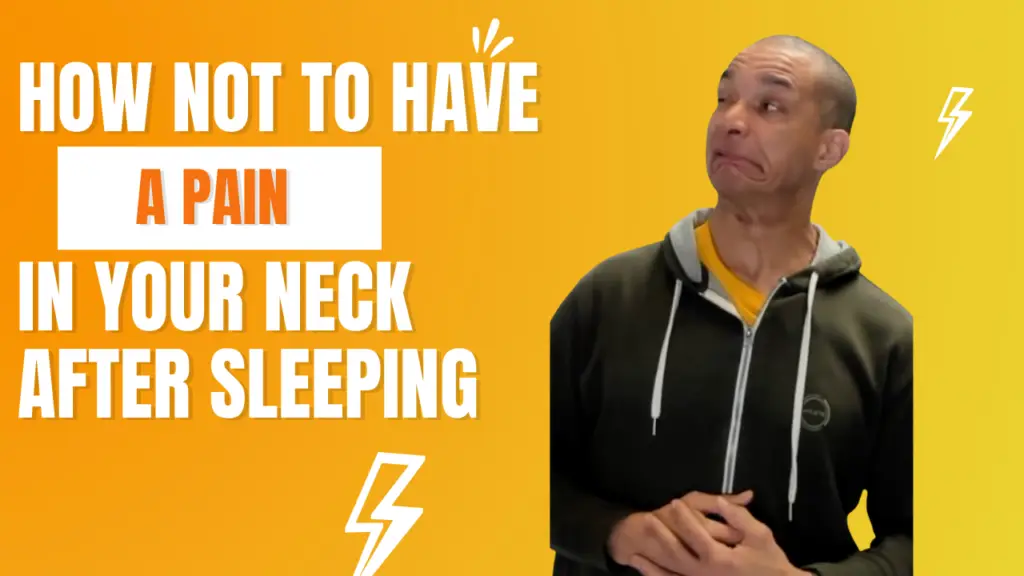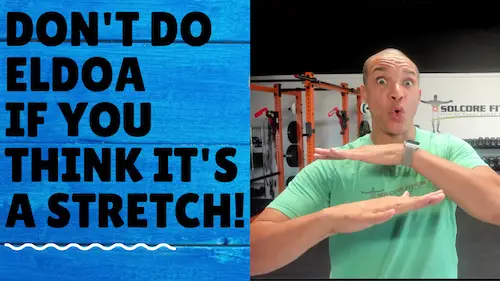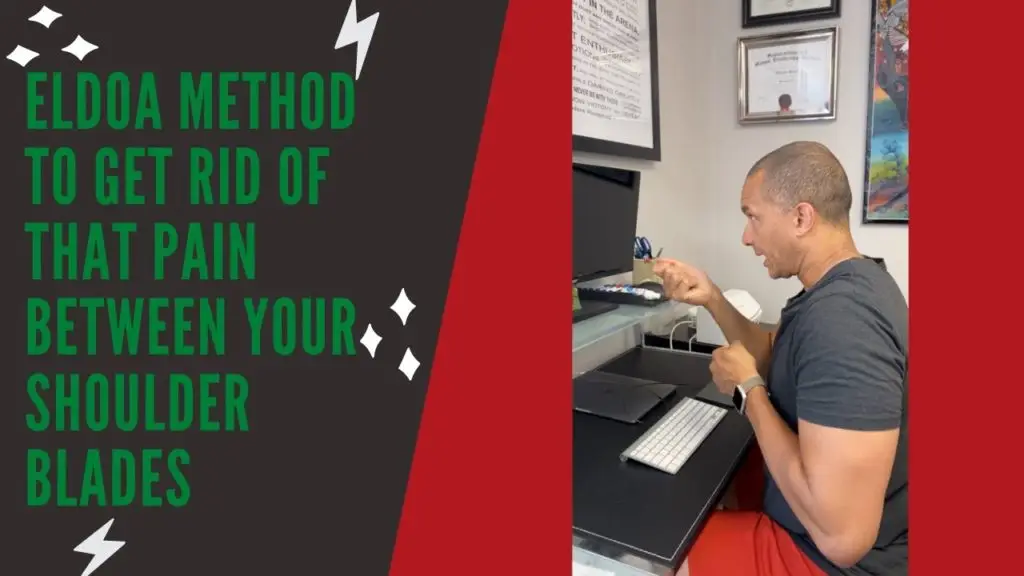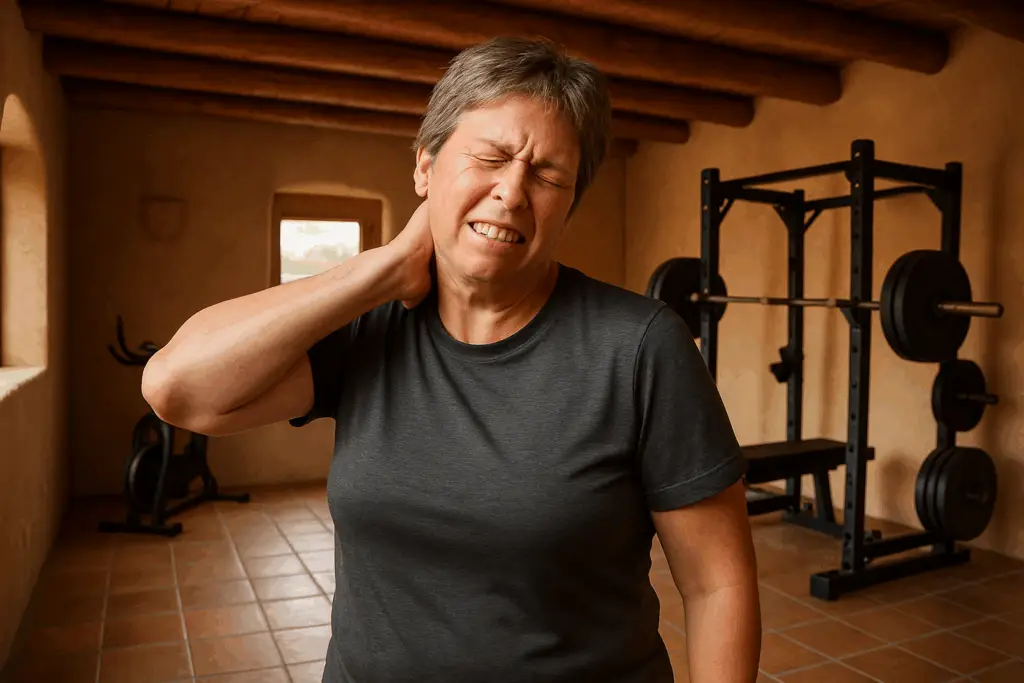
Click on the image to watch
We love gadgets here in the U.S. — especially ones that promise fast results.
The posture corrector brace is one of them. It straps over your shoulders and pulls them back, claiming to fix forward head posture and kyphosis.
But does it work?
Or is it just another overpromised shortcut?
Let’s break it down — scientifically and holistically.
What Is a Posture Corrector Brace Supposed to Do?
The posture brace is designed to pull your shoulders back, which is meant to correct rounded posture. The idea is simple: if your shoulders are more upright, your head and spine will follow.
But posture isn’t simple.
Forward head posture and kyphosis (over-rounded upper back) are complex conditions with deep structural, muscular, and neurological components. A strap won’t solve that — not by itself.
The Problem With “Just Pulling Back”
There’s a concept called the Law of 22 Degrees. Once your head shifts 22° forward relative to your shoulders, it changes the mechanics of your cervical spine. You don’t just bend forward — you slide forward — and over time, that becomes permanent.
That’s why you see older people stuck in that hunched-forward posture. They’ve crossed the threshold. The brace doesn’t reverse that.
And kyphosis?
That doesn’t start at the shoulders. It starts in the spine, involves the ribs, and pushes the shoulder blades outward and forward. That dominoes into tight pecs, weak rhomboids, overloaded lats, dysfunctional breathing, and nervous system strain.
Why Posture Braces Don’t Fix the Real Issue
A brace might remind you to stand up straight — but it doesn’t retrain your body. And that’s the problem.
Real posture correction requires:
- Opening and hydrating joints (especially the spine)
- Strengthening the right muscles in the right biomechanical positions
- Reprogramming your brain’s “postural map” (a.k.a. motor engrams)
- Restoring space in the rib cage and fascia
- Training your feet, not just your upper body
None of that happens by pulling two straps.
What You Should Focus on Instead
Want better posture? Here’s what works — and why.
💧 Start with Tissue Health
Hydrate your fascia. Sleep well. If your tissue is dry or inflamed, exercise will just create more dysfunction.
🧠 Retrain Your Brain
You don’t need to “think about posture” all day. You need to educate your nervous system to hold better posture automatically.
That means:
- ELDOA exercises for joint-specific spine awareness
- Strengthening your rhomboids with your arms overhead
- Training the levator scapulae to pull your head back
- Stretching the pec minor, lats, and delts to open space
- Re-aligning your gravity line: ear → shoulder → hip → knee → ankle
Most people think they’re standing straight… and they’re not. That’s because the brain’s postural map is distorted. But it’s fixable — if you train it intentionally.
🦶 Don’t Forget the Feet
Your feet send constant feedback to your brain about balance. If you don’t train them, your posture won’t hold — no matter what you do up top.
🫁 Free the Ribcage
Tight ribs lock your thoracic spine. That limits shoulder mobility and forces your neck forward. You need mobility in your costovertebral and sternocostal joints to breathe and move correctly.
So… Is a Posture Corrector Brace Worth It?
Short answer: No.
Even if it helps you remember to pull your shoulders back, it creates a false sense of progress. It bypasses the actual work — which means your dysfunction continues to build underneath.
And the longer you stay in that dysfunction, the harder it is to reverse.
The body adapts. If you keep pushing it into artificial alignment without education or support, you’re not solving anything. In fact, you might make it worse.
Train Your Body the Right Way
I get it. Gadgets are easy. Real training takes effort.
But your body is beautiful, adaptable, and designed to move well — if you give it the right input.
If you’re ready to do that — we can help.
Your Next Steps
You’ve got options, depending on what works best for you:
✅ Download the Free eBook:
“Get Out of Pain, Get Mobile & Get to the Life You Want”
Includes 4 core steps you can start right now. Instant download.
✅ Schedule a Call with Me:
If you’re ready to stop guessing and start training the right way, let’s talk. We’ll map out where you’re stuck, where you want to go, and I’ll show you what’s possible with a real, fascia-based approach.
Thanks for reading — and for caring about your body.
If this helped, share it with someone who needs it.
And if you’re still thinking about that brace… maybe leave it in the drawer. 😉
Building a foundation for a better life.
Find out more @





